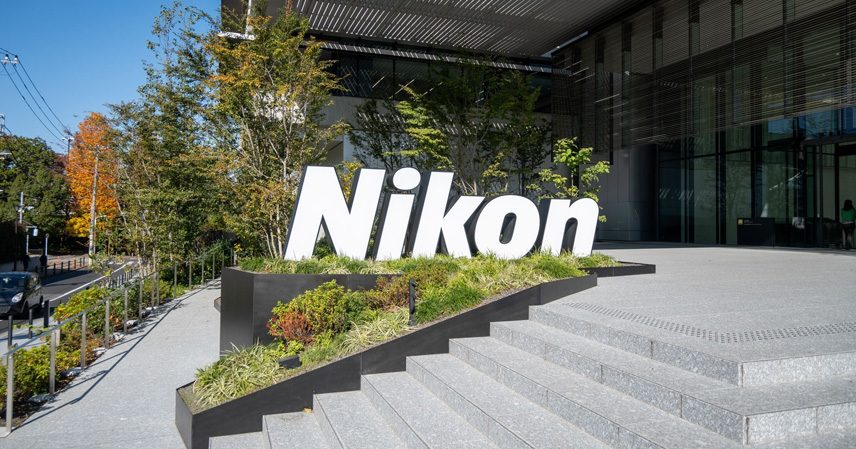The semiconductor lithography battlefield has seen a major shake-up. Nikon has unveiled the world’s first maskless lithography machine, targeting the AI chip packaging stage—a clever move that sidesteps the traditional EUV battlefront dominated by ASML.
This strategic play allows Nikon to exploit a gap in the market. For years, ASML has maintained a near-monopoly in advanced lithography, particularly EUV machines, which are essential for sub-7nm chip production. EUV systems cost over €17 billion in R&D, contain tens of thousands of components, and are produced in extremely limited quantities, with delivery schedules stretching years.
Nikon previously attempted to compete with ASML in high-end lithography, but the effort fell short, leading to the closure of its Yokohama plant—once a hub for 28nm equipment. Competing head-on was simply not viable.
However, ASML’s focus has always been on front-end wafer manufacturing, or the “birth” of the chip, leaving back-end packaging largely unaddressed. This stage, often underestimated as simple assembly, has become a critical bottleneck for AI chips.
Take NVIDIA’s H100 AI chips: instead of a single monolithic chip, they use Chiplet technology, combining multiple smaller chips on a large substrate. Traditional packaging lithography systems face limitations—they either require costly masks or can only process small wafers, making scaling inefficient. ASML’s equipment does not fully address these challenges, opening an opportunity for Nikon.
Enter the DSP-100 maskless lithography system. Unlike conventional lithography, which relies on physical masks costing tens of thousands per design change and takes weeks to modify, Nikon’s machine uses a spatial light modulator to project circuit patterns directly onto the substrate. Design adjustments can be made with a few keyboard inputs, reducing costs by 30% and cycle time from two weeks to just one day—a game-changer for AI chip prototyping.
Moreover, the DSP-100 supports large substrates, handling 600mm square boards—roughly desktop-sized—far surpassing previous 300mm wafer limits. For 100mm large-scale packaging, the machine achieves nine times the output of older systems, processing up to 50 substrates per hour, a critical efficiency boost for major foundries like TSMC and Samsung working on Chiplet assemblies.
The machine also delivers 1-micron resolution, sufficient for packaging tasks, without the extreme precision of EUV. This approach is technically adequate while remaining cost-effective—a perfect fit for AI chip demands.
By avoiding direct competition with ASML’s EUV dominance and targeting the rapidly growing AI chip packaging segment, Nikon has positioned itself to capture a significant market. Global AI chip demand is surging, with NVIDIA’s H100 selling for tens of thousands of dollars due to limited packaging capacity. Many manufacturers can produce small chips but struggle to assemble them into larger AI modules. Nikon’s solution directly addresses this capacity bottleneck.
Early orders began in July 2025, with companies like TSMC and Intel likely lining up. Whoever secures the DSP-100 first gains a competitive edge in AI chip production.
This move also revitalizes Nikon’s semiconductor business. In recent years, declining Intel orders had cut revenue sharply, but focusing on the packaging segment allows Nikon to leverage its optical technology instead of competing on EUV’s expensive laser sources and precision optics. By adapting multi-lens exposure technology from display manufacturing and integrating lithography precision, Nikon achieves low-cost innovation in a new arena.
ASML may now face a strategic challenge. Its focus on EUV leaves the packaging sector vulnerable. Once Nikon captures market share, catching up will be difficult. Packaging systems are far faster to develop than EUV, and Nikon already benefits from first-mover cost and efficiency advantages.
This development could also reshape industry dynamics. Previously, ASML was synonymous with lithography, but Nikon’s breakthrough proves that innovation in critical chip stages can disrupt even monopolized markets.
For countries investing in AI and Chiplet packaging, including domestic manufacturers, Nikon’s DSP-100 offers a more accessible alternative to EUV systems. This could accelerate AI chip assembly and increase bargaining power, while providing a platform for maskless lithography adoption.
Ultimately, Nikon’s strategy is not a lucky coincidence—it’s a calculated move that identifies market weaknesses, leverages core competencies, and targets the booming AI chip sector. This is more than a product launch; it’s a strategic breakthrough that demonstrates lithography innovation does not rely solely on EUV technology.
References:
- Industry Reports on Nikon DSP-100 Lithography System, 2025
- NVIDIA H100 Chiplet Packaging Overview



